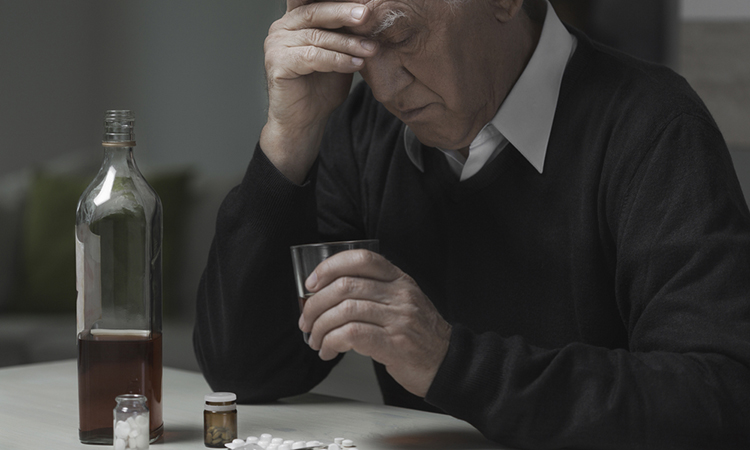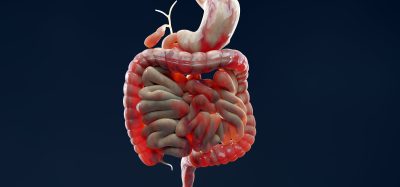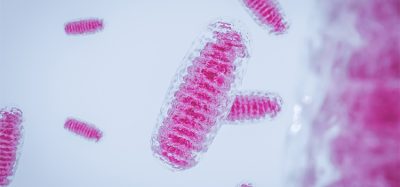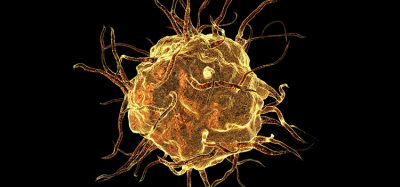Experimental antidepressant could also treat alcohol use disorder
Posted: 3 February 2023 | Izzy Wood (Drug Target Review) | No comments yet
A US pre-clinical study investigating the antidepressant: MAP4343, discovered it reduced alcohol intake in a mouse model of alcoholism.

Heartbroken widower use drugs and alcohol to kill sadness
According to a pre-clinical study from Scripps Research Institute (Scripps), US, an experimental antidepressant compound with a potentially unique mechanism of action, may also be effective against alcohol use disorder.
The research, published in Neuropsychopharmacology, found that several weeks of treatment with the molecule MAP4343 reversed excessive alcohol intake in mice that modelled this condition.
MAP4343, a steroid-type molecule, is currently being investigated in clinical trials as an antidepressant, though its probable mechanism of action, which involves modulating structural proteins in cells, is unlike that of any other antidepressant or alcohol use disorder treatment.
“These promising results suggest that we should test MAP4343 in people as a potential treatment for alcohol use disorder,” commented senior author Dr Candice Contet, Associate Professor in the Department of Molecular Medicine at Scripps.
Researchers estimate that more than 100 million people around the world have an alcohol use disorder, and there is a strong need for better treatments since current options, which include the drug naltrexone, usually fail to prevent a relapse.
The traditional treatment for alcohol use disorder is to block the rewarding effects of drinking alcohol, or by reversing the anxiety and malaise that arise after alcohol withdrawal and promote relapse.
However, recent studies of rodent and human brains have found evidence that alcohol use disorder can disrupt the normal production and regulation of key structural proteins in brain cells. These proteins include tubulin- the chief constituent of structures called microtubules, which cells use for a variety of functions including cell division and the internal transport of molecules.
The available evidence suggests that these disruptions help sustain alcohol dependency, that thus reversing them could offer a more effective treatment strategy. MAP4343 plausibly could fill this treatment role, since it is known to promote the assembly of tubulin proteins into microtubules.
In the new study, the team tested MAP4343 on mice that modelled alcohol use disorder. In this standard model, intermittent exposure to alcohol vapour created a state of dependency, such that the animals consume more and more alcohol when an opportunity, and within a few weeks were getting to D.U.I. levels of intoxication, voluntarily.
However, when treated for six weeks with escalating doses of MAP4343, alcohol-dependent mice reduced their average daily consumption to around the levels seen in non-dependent control mice, which were relatively unaffected by the treatment. MAP4343 also normalised blood levels of the stress hormone corticosterone, which are lower in alcohol-dependent animals forced to abstain from alcohol drinking.
Understanding MAP4343’s precise mechanism of action is another key remaining goal. In this study, the researchers found that alcohol-dependent mice experiencing alcohol withdrawal had unusually low levels of a modified form of tubulin, in the medial prefrontal cortex. This brain region is known to help regulate alcohol consumption and is often weakened in alcohol use disorder.
“Tubulin acetylation is known to change the mechanical properties of microtubules and it is possible that MAP4343 works against excessive alcohol drinking by reversing this change,” Contet concluded. “That is something we now intend to investigate.”
Related topics
Drug Leads, Drug Repurposing, Drug Targets, Protein, Proteomics, Targets
Related conditions
Alcohol use disorder (AUD)
Related organisations
Scripps Research Institute
Related people
Dr Candice Contet







